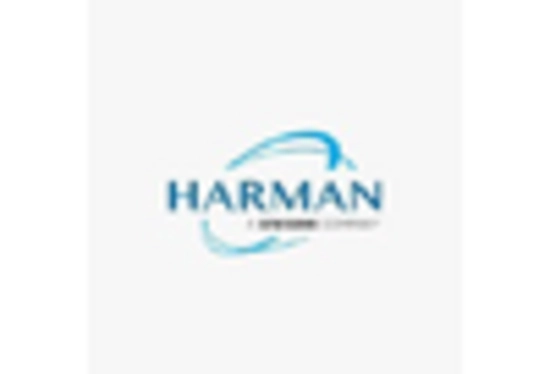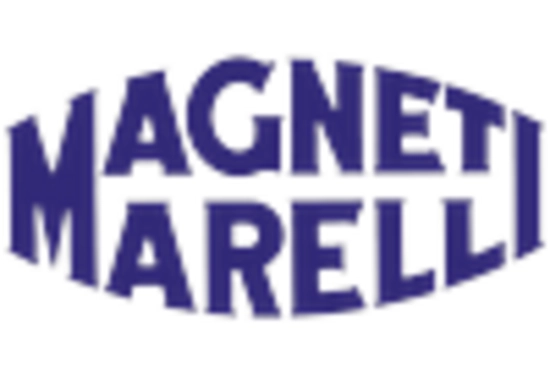Expansion of Fleet Management Solutions
The Vehicle Health Monitoring Market is experiencing growth due to the expansion of fleet management solutions across various sectors. Companies are increasingly recognizing the value of monitoring vehicle health to optimize fleet performance and reduce operational costs. Fleet operators are adopting advanced health monitoring systems to track vehicle conditions, manage maintenance schedules, and enhance overall efficiency. This trend is particularly evident in logistics and transportation sectors, where the need for reliable and efficient fleet operations is paramount. The integration of health monitoring solutions into fleet management systems is expected to drive significant growth in the Vehicle Health Monitoring Market, as businesses seek to leverage technology for improved operational outcomes.
Technological Advancements in IoT and AI
The Vehicle Health Monitoring Market is being transformed by rapid technological advancements in the fields of Internet of Things (IoT) and Artificial Intelligence (AI). These technologies enable the development of sophisticated monitoring systems that provide real-time data analytics and predictive maintenance capabilities. IoT devices facilitate seamless communication between vehicles and monitoring platforms, allowing for continuous health assessments. Meanwhile, AI algorithms analyze vast amounts of data to predict potential failures before they occur. This integration of IoT and AI is not only enhancing the accuracy of vehicle diagnostics but also improving overall operational efficiency. As a result, the market is witnessing a growing adoption of these technologies, which is likely to drive the Vehicle Health Monitoring Market to new heights in the coming years.
Rising Consumer Awareness and Preferences
The Vehicle Health Monitoring Market is benefiting from a notable increase in consumer awareness regarding vehicle maintenance and health monitoring solutions. As consumers become more informed about the advantages of utilizing advanced monitoring systems, there is a growing preference for vehicles equipped with such technologies. This shift in consumer behavior is prompting manufacturers to incorporate health monitoring features into their vehicles, thereby enhancing their market appeal. Recent surveys indicate that a significant percentage of consumers prioritize vehicle health monitoring capabilities when making purchasing decisions. This trend is expected to drive the demand for innovative solutions within the Vehicle Health Monitoring Market, as manufacturers strive to meet evolving consumer expectations and preferences.
Regulatory Compliance and Safety Standards
The Vehicle Health Monitoring Market is significantly influenced by stringent regulatory compliance and safety standards imposed by various authorities. Governments worldwide are mandating the implementation of advanced monitoring systems to ensure vehicle safety and reduce emissions. This regulatory landscape is compelling manufacturers to adopt innovative health monitoring solutions that not only meet compliance requirements but also enhance vehicle performance. For instance, the introduction of regulations aimed at reducing carbon footprints has led to an increased focus on vehicle diagnostics and emissions monitoring. Consequently, the market is witnessing a rise in demand for solutions that facilitate compliance with these regulations, thereby driving growth in the Vehicle Health Monitoring Market. The emphasis on safety and environmental standards is expected to continue shaping the market dynamics in the foreseeable future.
Increasing Demand for Preventive Maintenance
The Vehicle Health Monitoring Market is experiencing a surge in demand for preventive maintenance solutions. This trend is driven by the growing awareness among vehicle owners regarding the importance of regular maintenance to avoid costly repairs. Preventive maintenance not only enhances vehicle longevity but also improves safety and performance. According to recent data, the preventive maintenance segment is projected to account for a substantial share of the market, reflecting a shift in consumer behavior towards proactive vehicle care. As a result, companies are increasingly investing in advanced monitoring technologies that provide real-time insights into vehicle health, thereby fostering a more informed customer base. This shift is likely to propel the Vehicle Health Monitoring Market forward, as more consumers seek to leverage technology for better vehicle management.


















Leave a Comment